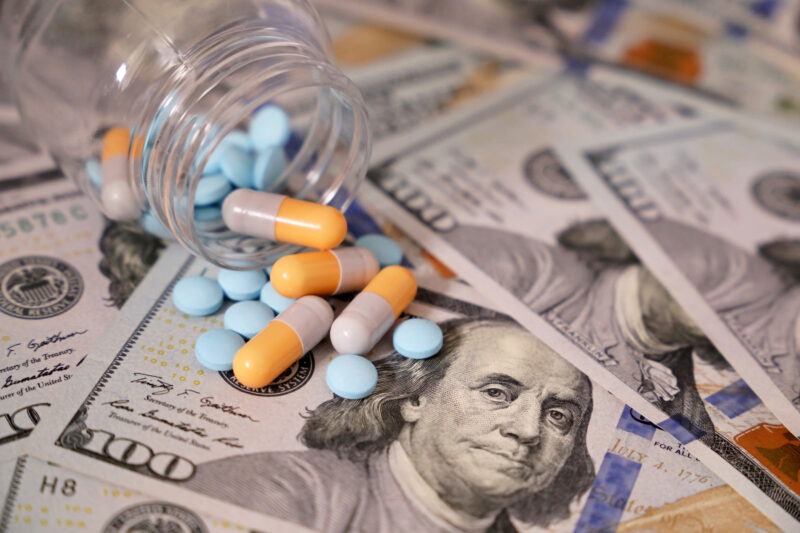What is Next in Drug Pricing Reforms for the US?
Under a new US Administration, will drug-pricing reforms that call for the US government to negotiate prices for certain drugs continue? Will these reforms stay in play, and which products may be affected?
By Patricia Van Arnum, Editorial Director, DCAT, pvanarnum@dcat.org
A new Administration & drug pricing
One of the key questions under the new Administration under President Donald Trump will be policy relating to drug pricing. The prior Administration under President Joe Biden put into implementation drug-pricing reforms, which were authorized under the Inflation Reduction Act, a major climate, tax, and healthcare bill that was signed into law in 2022 and which included drug-pricing measures. A key provision under that law is that for the first time ever, the US government, through the Department of Health and Human Services (HHS), was authorized and required to negotiate prices for certain prescription drugs under Medicare, the US federal health insurance program for people 65 or older. The process for implementing the new law began in 2023, and the first negotiated prices for 10 drugs are set go into effect in 2026.
The drug-pricing measures under the Inflation Reduction Act apply to select drugs under Medicare Part D, which covers most outpatient prescription drugs from pharmacies and other pharmacy providers, and Medicare Part B, which applies to prescription drugs administered in a physician’s office or clinical/hospital outpatient setting. The Medicare Drug Price Negotiation Program limits the number of drugs to be selected for price negotiations. Under the drug-price negotiation program, the HHS Secretary is authorized and required to select a specified number of drugs from a list of 50 “negotiation-eligible drugs” with the highest Medicare Part D spending and from a list of 50 “negotiation-eligible drugs” with the highest Medicare Part B spending over a given 12-month period. It would limit the number of eligible drugs for negotiations to 10 Medicare Part D drugs in 2026, 15 Medicare Part D drugs in 2027, 15 Medicare Part B and D drugs in 2028, and 20 Medicare Part B and D drugs in 2029 and thereafter. In all, over the next several years, if the law stays in place, the US government will negotiate prices for up to 60 drugs covered under Medicare Part D and Part B, and up to an additional 20 drugs every year after that.
In addition, the program also limits the type of drugs eligible to be negotiated under the drug-pricing plan. For example, the plan applies only to “high-cost” drugs defined by levels of Medicare spending, “older” drugs, defined on the basis of the number of years from when a drug was approved by the US Food and Drug Administration (FDA), and drugs without generic-drug and biosimilar competition. Also, certain drugs, such as orphan drugs and plasma-derived products, are excluded from the negotiation process.
A second set of 15 drugs to be negotiated under under the Medicare Drug Price Negotiation Program were selected last month (January 17, 2025). The negotiations with participating drug companies for these 15 drugs will occur in 2025 and any negotiated prices will become effective in 2027.
The Trump Administration is continuing the program, but says it will seek greater transparency in the negotiation process. “Lowering the cost of prescription drugs for Americans is a top priority of President Trump and his Administration,” said the US Centers for Medicare and Medicaid Services, in a January 29, 2025, statement. “In accordance with the statutory requirements of the Inflation Reduction Act, the Centers for Medicare and Medicaid Services (CMS) released the list of 15 drugs selected for the second cycle of the Medicare Drug Price Negotiation Program on January 17, 2025. As the second cycle begins under the Trump Administration, CMS is committed to incorporating lessons learned to date from the program and to considering opportunities to bring greater transparency in the Negotiation Program. CMS intends to provide opportunities for stakeholders to provide specific ideas to improve the Negotiation Program, consistent with the goals of achieving greater value for beneficiaries and taxpayers and continuing to foster innovation.”
What drugs are affected?
Up next are the negotiations between drug companies and the US government for the 15 drugs selected by HHS last month (January 2025) for participation in the Medicare Drug Price Negotiation Program. These 15 drugs include: Novo Nordisk’s semaglutide-based products, Ozempic (semaglutide) (injection for treating Type 2 diabetes); Wegoy (semaglutide) (injection for treating obesity) and Rybelsus (semaglutide) (oral drug for treating Type 2 diabetes); two other diabetes medicines, Boehringer Ingelheim’s Tradjenta (linagliptin) and Merck & Co.’s Janumet/Janumet XR (sitagliptin and metformin); two respiratory drugs by GSK, Trelegy Ellipta (fluticasone furoate, umeclidinium & vilanterol and Breo Ellipta (fluticasone furoate/vilanterol); and several cancer drugs, Astella’s/Pfizer’s Xtandi (enzalutamide) for treating breast cancer; Bristol-Myers Squibb’s Pomalyst (pomalidomide) for treating multiple myeloma and AIDS-related Kaposi sarcoma; Pfizer’s Ibrance (palbociclib) for treating certain forms of advanced breast cancer; and AstraZeneca’s Calquence (acalabrutinib) for treating mantle cell lymphoma for treat chronic lymphocytic leukemia or small lymphocytic lymphoma;.
The remaining drugs slated for price negotiations this year (2025) are: AbbVie’s Vraylar (cariprazine) for treating major depressive disorder with other antidepressants and bipolar 1 disorder; Amgen’s Otezla (apremilast) for treating certain types of psoriasis and psoriatic arthritis; Boehringer-Ingelheim’s Ofev (nintedanib) for treating idiopathic pulmonory fibrosis; AbbVie’s Linzess (linaclotide) for treating irritable bowel syndrome; Salix Pharmaceuticals’ Xifaxan (rifaximin) also for treating irritable bowel syndrome; and Teva Pharmaceutical’s Austedo/Austedo XR (deutetrabenazine) for treating tardive dyskinesia and Huntington’s disease chorea.
These 15 drugs will join the first set of 10 drugs for which prices have already been negotiated under the Medicare Drug Price Negotiation Program and which will go into effect in 2026. Those 10 drugs are: AbbVie’s/Johnson & Johnson’s Imbruvica (ibrutinib); Amgen’s Enbrel (etanercept); AstraZeneca’s Farxiga (dapagliflozin); Boehringer Ingelheim’s/Eli Lilly and Company’s Jardiance (empagliflozin); Bristol-Myers Squibb’s/Pfizer’s Eliquis (apixaban); Johnson & Johnson’s Stelara (ustekinumab) and Xarelto (rivaroxaban); Merck & Co.’s Januvia (sitagliptin); Novartis’ Entresto (sacubitril/valsartan); and various formats for insulin apart, a short-acting insulin from Novo Nordisk, Fiasp, Fiasp FlexTouch, Fiasp PenFill, NovoLog, NovoLog FlexPen, and NovoLog PenFill.






